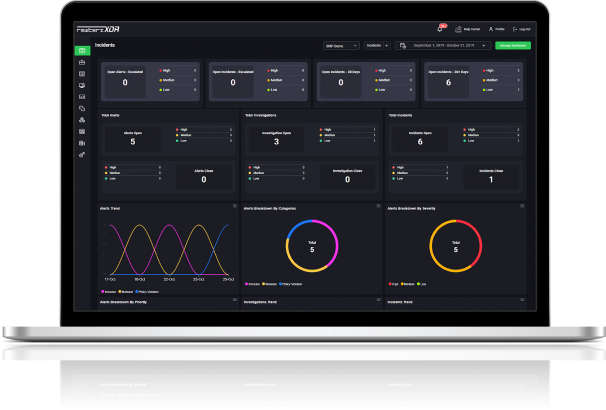

Interlock Ransomware Exploits ClickFix – Active IOCs
August 4, 2025
Multiple IBM Products Vulnerabilities
August 4, 2025
Interlock Ransomware Exploits ClickFix – Active IOCs
August 4, 2025
Multiple IBM Products Vulnerabilities
August 4, 2025Severity
Meduim
Analysis Summary
AsyncRAT is an open-source tool designed for remote monitoring via encrypted connections. However, it could be utilized by threat actors as it provides keylogging, remote access, and other functionality that could damage a victim's computer or system. This tool can send malicious files to the system that can be a source of other malicious software once executed. These can also be used to transfer malicious programs into USB drives and can infect other systems. Numerous malware campaigns and threat actors have utilized AsyncRAT in various recent attacks. Recently, a social engineering campaign that targeted Thailand Pass (an online travel agency) consumers was observed. Additionally, the Follina Outbreak in Australia spread AsyncRAT as a malicious payload. AsyncRAT can be delivered through several techniques, including spear-phishing, malicious advertising, exploit kits, etc.
One of the key features of AsyncRAT is its use of advanced encryption and obfuscation techniques to evade detection by anti-malware software. It also can update itself and download additional modules or plugins, which can be used to add new features or expand its capabilities. To protect against AsyncRAT and similar malware, it's important to maintain up-to-date software and security patches, use strong access controls and passwords, and regularly back up important data. It's also recommended to use anti-malware software and to be cautious of suspicious emails or links. If a system is suspected of being infected with AsyncRAT, it's important to isolate it from the network and seek the assistance of a security professional.
Impact
- Unauthorized Access
- Information Theft
Indicators of Compromise
MD5
812455a70780bd8e89750435819438dd
5a1646b91c7a4bcd2994f524c5bf27a6
1a40d5a0e61c40e8d2aa97aa9cbe779d
SHA-256
75ece8dd79354984ec6f57b446909636f40749d9cad2c140728e8c2689de8bf2
21487f168093f7efda30c4f0abedf415228ed9dbfa87c655f75a09933a4efb17
3ad96b901c0cd3bd4707865b9212dcfbb8a7a3890954f30d324d7994bd29e2dc
SHA1
dd35fb549667420eb7337c4fdbba8077a334af24
cf922354c4aa52a5d4d71775961d6775430f9713
4b5b1a4da65b4d1b9822afe635db38a1a7299bc5
Remediation
- Block all threat indicators at your respective controls.
- Search for indicators of compromise (IOCs) in your environment utilizing your respective security controls.
- Do not download documents attached in emails from unknown sources and strictly refrain from enabling macros when the source isn’t reliable.
- Enable antivirus and anti-malware software and update signature definitions promptly. Using multi-layered protection is necessary to secure vulnerable assets.
- Patch and upgrade any platforms and software on time and make it into a standard security policy.
- Enforce access management policies.
- Along with network and system hardening, code hardening should be implemented within the organization so that their websites and software are secure. Use testing tools to detect any vulnerabilities in the deployed codes.








